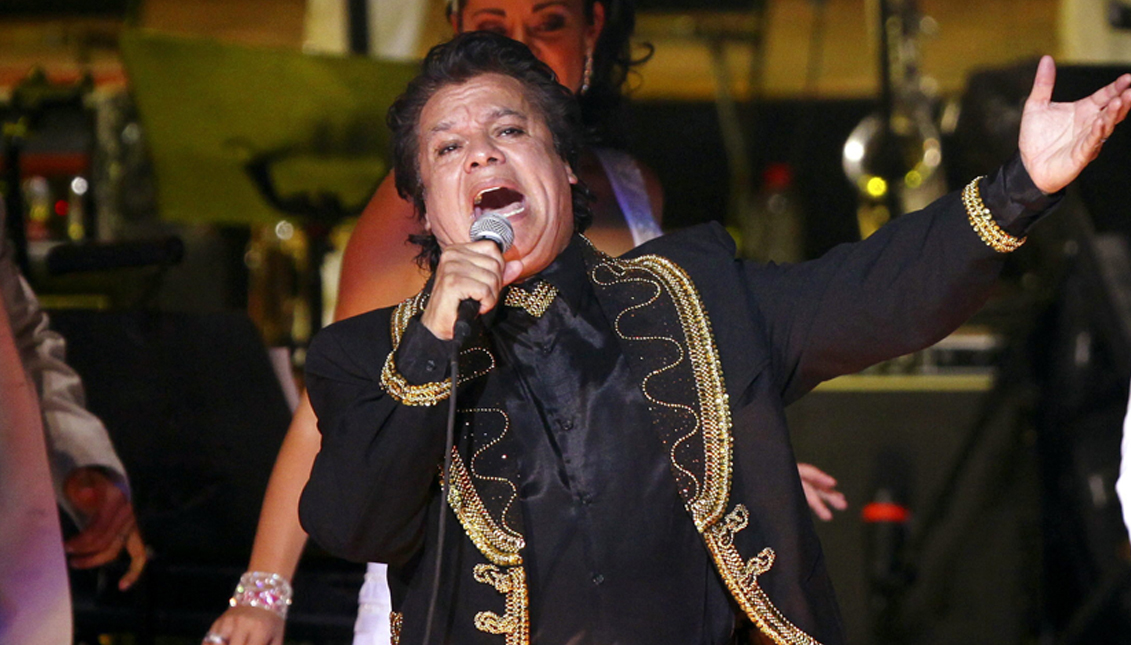
Juan Gabriel: the importance of an icon
There’s an important bond between the melancholy and the Latin American idiosyncrasy. Our romantic – even dramatic – spirit is undeniable and it slips through our cultural manifestations. The flirting, the love promises, the heartbreak, the anger and the pain seem to be always in the discursive line of artistic languages in Latin America.
There’s an important bond between the melancholy and the Latin American idiosyncrasy. Our romantic – even dramatic – spirit is undeniable and it slips through our cultural manifestations. The flirting, the love promises, the heartbreak, the anger and the pain seem to be always in the discursive line of artistic languages in Latin America.
From the bolero and the son cubano to the soap operas and the literature, love has always been the cornerstone in the determination of Latino’s mettle. In Mexico, the tequila and the Mariachi seem to perfectly frame the romantic stereotype, but it wasn’t always like that. The history of the musical culture in the Centro American country has evolved from diverse forms, especially after art’s secularization.
Between the Colony and the Mexican Revolution, the aesthetics of El Charro has always been associated with the field; the party and the temper, besides representing the national sport and after have transformed itself into an international symbol. But it was music, during the 20’s, who’d inspire and transform the country’s cultural scene. From Tito Guízar to Pedro Infante, the cinema undertook the transformation of the Mariachi into a comprehensible emblem.
Musically speaking, México was never extent of the transformations that the Caribbean son would suffer over time. Inside the Mariachi metric you can find all kinds of syncretism and hybridizations, typical of the cultural richness in the Latino American musical language: canción ranchera, pasodoble, marcha, vals, bolero, danzón, serenata, joropo and even opera, all repertoire models, product of the gradual mixing and the never-ending transit.
But the differentiation of El Charro inside the Mexican social stratum is frequently overlooked. His investment and his endeavor denoted already certain lineage and composure, and such stigma would permeate as well towards music. The stocky stereotype, hard worker, reactionary and rebel was always linked to the Charro symbol, the party man. But there was a man who managed to transform everything since the 1970’s, translating it with the sweetness of his voice: Alberto Aguilera Valadez, best known as Juan Gabriel.
Born in a poor family fallen into disgrace, Alberto discovered his passion for music at the early age of 13, under the guardianship of Juan Contreras. After many straits and trying the show business of the nightlife, he finally met José Alfredo Jiménez, after which he managed to sign a contract with RCA.
Between 1971 and 1973 Aberto Aguilera (who had already adopted the name of Juan Gabriel, honoring his two paternal figures) developed a musical language typical of the époque where he brought together the romantic ballad and the dancing rhythms in fashion, obtaining brief hits with songs like No tengo dinero and Será Mañana.
But it was his 1974 record, with the Mariachi Vargas from Tecalitlán who’d mark the turning point in his career. Singles like Se me olvidó otra vez, El Noa-Noa, La diferencia and later on his productive artistic relationship with Rocío Durcal, allowed Juan Gabriel to become an acknowledged artist, his incursions into cinema and to begin his career in Latin America.
After his debut as a producer during the 1980’s and organizing the career of artists like José José, Juan Gabriel positioned himself as an icon in popular music. His songs had no limits or stratums, and his stories of heartbreaks, between the bolero and the ranchera, were common scenarios to all audiences. It was thanks to Juan Gabriel that the Latino American popular music became a cultural product appropriated by everyone and whose language was comprehensible, not only musically but also idiosyncratically.
And it was then, at the beginning of the 1990’s, when Juan Gabriel would put together one of the most important shows in the history of Mexican music, whose evidence would only be evident years after. Conducted in the Palacio de Bellas Artes of Mexico between May 9th and 12th 1990 he sang accompanied by the National Symphonic Orchestra. It’s well known that the categorical difference between social classes that have access to some sort of cultural instruction and those whose roots build the folklore of their community is radical and it has been for decades, and that show was not going to be the exception.
The torrent of criticism did not mitigate the strength of the show; hanging in to the national symbolism and the Mexican identity, Juan Gabriel prove the heterogeneity of his musical career, as well as the imprint of his temper in the genre: there would not be any more exclusivities after that May. Even when the critics may have unleashed purisms and officialdom, this was the first cry for diversity and the first crack into the rupture of hegemonic discourses.
Juan Gabriel allowed the Charro to have feelings and the romantic to be tenacious. He was a witness of transformer cultural processes and his songs are its testimony. Beyond all the nuances his private life may have had, it must be his musical production what outlives him and not the other way around.
Long live the genius of popular music, the voice of Mexico, the Divo of Juárez.










LEAVE A COMMENT:
Join the discussion! Leave a comment.